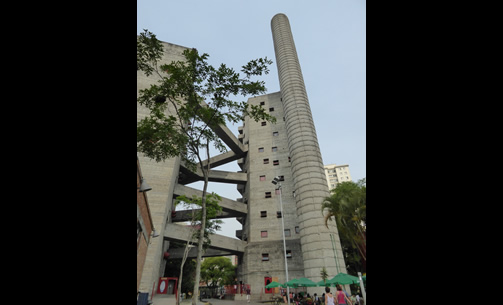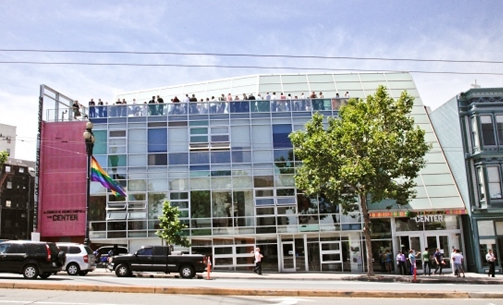The 2017 Travel Fellowship Competition
This opportunity is open to each student who placed as a semifinalist in the 2017 BERKELEY PRIZE Essay Competition.
BACKGROUND
Semifinalists who select to compete for a Travel Fellowship are invited to submit proposals demonstrating how they would use the opportunity to travel to an architecturally-significant destination, preferably to participate in a hands-on, service-oriented situation. This is an exciting opportunity to explore a different part of the world and to participate in an organized project that will assist the winner in gaining a deeper understanding of the social art of architecture.
Travel Fellowship candidates are asked to submit a proposal for a specific plan of travel and study away from their academic institution during their Summer break for 2017. The Travel Fellowship provides a fixed stipend adequate to pay for a round-trip airfare from the city in which you are studying to the destination and back and to pay for lodging, food, and incidentals during your stay, normally enough for three weeks.
The requirements for the Travel Fellowship Proposals are open-ended. The BERKELEY PRIZE Committee looks for both an understanding of the opportunity that is offered and an understanding of the possible ways in which the student's research into the current year's PRIZE topic – Architecture Reveals Communities - might be furthered by the travel opportunity.
The winning student(s) will be asked to write a Report on their travels that will be posted on the BERKELEY PRIZE website. Students are also asked to keep a photo diary of their time spent traveling, portions of which will also be posted on the website.
Read the archives of previous years for successful Proposals and Travel Reports.
|
|
|
 THE ATENEO MERCANTIL DE VALENCIA (The Ateneo Mercantile Club of Valencia), Valencia, Spain, 1879. The Ateneo is located directly across form the City Hall and served the traditional, male, business community of Valencia through most of the 20th century. Now open by membership to the entire city, the club sponsors card clubs, art exhibits, film festivals, cultural and business symposia, and has a restaurant and bar available to the public. (Contributor: Benjamin Clavan)
 DIKSHA BHUMI - THE BABASHAB AMBEDKAR MEMORIAL COMPLEX, Dalit Buddhist Community of Nagpur, Maharashtra, India. (Contributor: Padma Maitland)
 BIBIA-ELEGU CROSS-BORDER MARKET (proposed), community market, Elegu Town, Uganda-South Sudan Border. (Contributor: Benard Acellam)  PHONGSAVAN, Hmong Market and Food Court, Milwaukee, U.S.A. The building, a typical United States-vernacular commercial structure was formerly an auto parts store that is located in a strip of other commercial businesses. There is no formal sign except for several small placards advertisingHmong businesses. It has become a center for the large minority population of Hmong who now live in the city. See also, the Hmong American Friendship Association, Inc. building, located in another repurposed commercial structure in the city. (Contributor, Arjit Sen, suggested the Hmong community buildings.)
 ST. MARK'S EPISCOPAL CHURCH AND RELIGIOUS COMMUNITY CENTER, Milwaukee, U.S.A. (Contributor: Arijit Sen)  STRAWBERRY CREEK LODGE, Berkeley, U.S.A. A senior affordable housing community of 150 households. (Contributor: Raymond Lifchez)  CONGREGATION BETH ISRAEL, Berkeley, U.S.A. A Modern Jewish Orthodox synagogue, this was the first synagogue in Berkeley. Established in 1924 as the Berkeley Hebrew Center, it traces its origins to the First Hebrew Congregation of Berkeley, founded in 1909. The latest structure was completed in 2005. (Contributor: Raymond Lifchez)  YMCA of the Central Bay Area, Berkeley, U.S.A. A registered historic landmark built in 1910, expanded in 1960 and 1994. (Contributor: Raymond Lifchez)  HAGIA SOPHIA, Istanbul, Turkey. Former Greek Orthodox basilica and Byzantine masterpiece completed in 537, converted into an imperial mosque in 1453, and declared a museum in 1935, representing a variety of communities for nearly 1500 years. (Contributor: Itamar Landau)  FRESNO BUDDHIST TEMPLE, Fresno, California, U.S.A. (Contributor: Daves Rossell)  SOCIALIST HALL, Butte, Montana, U.S.A. (Contributor: Daves Rossell)  COMMUNITY HAIR CARE CENTER, Savannah, Georgia, U.S.A. (Contributor: Daves Rossell)  JERUSALEM INTERNATIONAL YMCA, 1933, Jerusalem, Israel. Arthur Loomis Harmon, SHREVE, LAMB AND HARMON, Architect. The Young Men's Christian Association (YMCA) building is celebrated as a wellspring of cultural, athletic, social and intellectual life for all who live in Israel and visitors to the country. (Contributor: Raymond Lifchez)  CCOO (COMISIONES OBERAS DEL PAIS VALENCIANO) BUILDING, Valencia, Spain. The Country Workers’ Commission headquarters in the city, serving the community of workers throughout the region. (Contributor: Benjamin Clavan)  SESC (SERVIÇ0 SOCIAL DO COMÉRCIO) POMPEIA FACTORY PROJECT, Sao Paolo, Brazil, 1986. The SESC is a Brazilian non-profit private institution started by business owners aimed primarily for the welfare of their employees and their families. Its revenues come from a 1.5 percent payroll tax on commerce workers and thus is widely seen as representing the community of workers. This leisure center consists of a renovated factory and two new, five floor tower blocks. The complex contains tennis courts, pools, workshop areas, a library, "living rooms", exhibition halls, auditorium(s), a restaurant and a large solarium. Architect, Linda Bo Bardi. (One of two photos. Contributor: Benjamin Clavan)  SESC (SERVIÇ0 SOCIAL DO COMÉRCIO) POMPEIA FACTORY PROJECT, Sao Paolo, Brazil, 1986. The SESC is a Brazilian non-profit private institution started by business owners aimed primarily for the welfare of their employees and their families. Its revenues come from a 1.5 percent payroll tax on commerce workers and thus is widely seen as representing the community of workers. This leisure center consists of a renovated factory and two new, five floor tower blocks. The complex contains tennis courts, pools, workshop areas, a library, "living rooms", exhibition halls, auditorium(s), a restaurant and a large solarium. Architect, Linda Bo Bardi. (One of two photos. Contributor: Benjamin Clavan)  CLAREMONT TENNIS CLUB, Berkeley, USA. (Contributor: Raymond Lifchez)  FIRST AFRICAN METHODIST CHURCH, Oakland, U.S.A., 1902. Congregation founded by free African Americans in 1816 as part of a nationwide movement in the United States. (Contributor: Raymond Lifchez)  MOSQUE AND MINARET, Village of Teqoa, south-east of Bethlehem, Palestine. (Contributor: Shimon Dotan)  LGBT CENTER, Tel-Aviv, Israel: Formerly, the General Federation of Students and Young Workers Center completed in 1940; later re-purposed as the Dov Hoz professional school; and since 2008 Israel's first Lesbian, Gay, Bisexual, and Transgender public gathering place. (Contributor: Robert Ungar)  SCUOLA DI SAN NICOLO DEI GRECI, Venice, Italy. Built in 1539 as the center for a Greek fraternal organization dedicated to the spiritual, social, and economic well-being of its members. (Contributor: Raymond Lifchez)  FRIENDSHIP CENTRE, Gaibandha, Bangladesh. Kashef Mahboob Chowdhury/URBANA architects, 2011. Built by an NGO which works with some of the poorest in the country who live mainly in riverine islands (chars) with very limited access and opportunities, Friendship uses the facility for its own training programs and also rents out spaces for meetings, training, conferences etc. to further its role as a new focus for the community. (Contributor: Nezar AlSayyad, photo at: http://www.archdaily.com/423706/friendship-centre-kashef-mahboob-chowdhury-urbana)  BERKELEY FRIENDS MEETINGHOUSE, Berkeley, USA. The Meetinghouse is a gathering place for Quakers, a Christian religious denomination that believes in service and pacifism. (Contributor: Raymond Lifchez)  SRI EKAMBARESWARAR TEMPLE at Kanchipuram, Tamil Nadu, India. Popularly known as Ekambara Nathar temple, this large complex, originally built by the Pallava dynasty (4th to 9th Century), was later reconstructed by the Chola and Vijayanagar rulers. Although the motivating force for the temple is the worship of the Hindu Lord Shiva, its use is - and probably always has been - both religious and secular, thus serving the local population in a multitude of ways. (Contributor: Paul Broches)  THE SF LGBT CENTER, San Francisco, USA. Cee/Pfau Collaborative, 2000. The LGBT Center was established in the 1970s to connect the diverse lesbian, gay, bi-sexual, and trans communities with important resources. (Contributor: Thea Chroman).
|
|

























